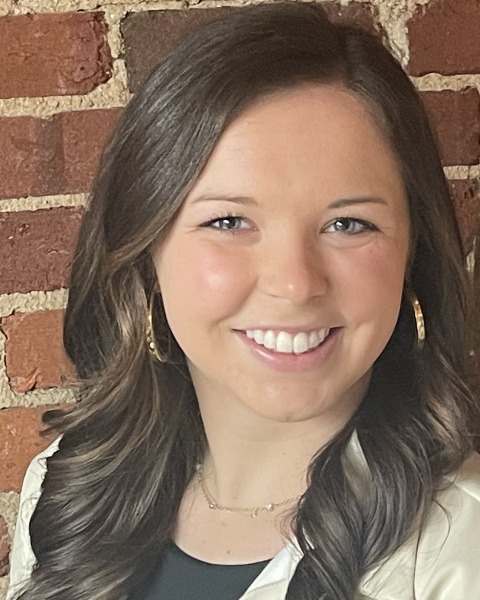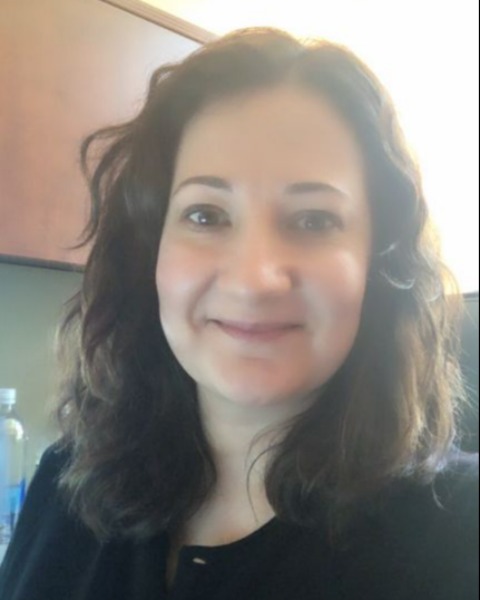Career/Personal Development (CPD)
PP1702 - Evaluation of Patient-Audiologist Communication in Minority Populations
- CD
Chloe Doran
University of South Alabama
University of South Alabama
Mobile, AlabamaFinancial Disclosures: I do not have any relevant financial relationships with anything to disclose.
Non-Financial Disclosures: I do not have any relevant non-financial relationships with anything to disclose. .jpg)
Frances L. Ange, BS (she/her/hers)
Doctor of Audiology Student
University of South Alabama Department of Speech Pathology & Audiology
University of South Alabama
Mobile, AlabamaFinancial Disclosures: I do not have any relevant financial relationships with anything to disclose.
Non-Financial Disclosures: I do not have any relevant non-financial relationships with anything to disclose.
Katherine M. Snavely, BS
Doctorate of Audiology student
University of South Alabama
University of South Alabama
Mobile, AlabamaFinancial Disclosures: I do not have any relevant financial relationships with anything to disclose.
Non-Financial Disclosures: I do not have any relevant non-financial relationships with anything to disclose.
Dania Rishiq, PhD
Assistant Professor
The University of South Alabama
Mobile, AlabamaFinancial Disclosures: I do not have any relevant financial relationships with anything to disclose.
Non-Financial Disclosures: I do not have any relevant non-financial relationships with anything to disclose..jpg)
Frances L. Ange, BS (she/her/hers)
Doctor of Audiology Student
University of South Alabama Department of Speech Pathology & Audiology
University of South Alabama
Mobile, AlabamaFinancial Disclosures: I do not have any relevant financial relationships with anything to disclose.
Non-Financial Disclosures: I do not have any relevant non-financial relationships with anything to disclose.
Katherine M. Snavely, BS
Doctorate of Audiology student
University of South Alabama
University of South Alabama
Mobile, AlabamaFinancial Disclosures: I do not have any relevant financial relationships with anything to disclose.
Non-Financial Disclosures: I do not have any relevant non-financial relationships with anything to disclose.
Dania Rishiq, PhD
Assistant Professor
The University of South Alabama
Mobile, AlabamaFinancial Disclosures: I do not have any relevant financial relationships with anything to disclose.
Non-Financial Disclosures: I do not have any relevant non-financial relationships with anything to disclose.- CD
Chloe Doran
University of South Alabama
University of South Alabama
Mobile, AlabamaFinancial Disclosures: I do not have any relevant financial relationships with anything to disclose.
Non-Financial Disclosures: I do not have any relevant non-financial relationships with anything to disclose.
Lead Presenter(s)
Presenter(s)
Contributor(s)
Patient-provider communication is a key dimension in patient-centered care. In this study, we will evaluate the communication between audiologists and minority patients. Patients will complete several self-assessment questionnaires immediately following their visit to the audiology provider. Using these instruments, various dimensions of patient-provider communication will be assessed, including autonomy supportiveness, patient-centered communication and trust. Provider communication behaviors are malleable and play an important role in reducing racial/ethnic disparities in the quality of audiology services. Therefore, the further understanding of patient-provider communication in diverse populations will serve as a critical starting point for addressing current disparities in the audiology profession.
Summary:
Background: Minority population has grown to represent nearly a third of the total population in the United States (USCB, 2007). As the population becomes increasingly diverse, audiologists must be prepared to meet the needs of this population.
The communication between patients and providers is a core dimension in patient care. It has been shown to be associated with improved adherence to intervention, patient outcomes and satisfaction. This is particularly relevant among racial/ethnic minority patients. Several studies report that provider implicit racial bias is negatively linked with care satisfaction, adherence to treatment and overall health status in minority patients (e.g. Maina et al. 2018; Muatusitz et al. 2014; Street et al. 2009).
Limited research has examined the communication between audiologists and minority patients. Therefore, the goal of this project is to address this gap and hopefully to improve patient-audiologist communication for minority groups. Specifically, the objective of this study is to evaluate the communication between audiologists (including student clinicians) and minority patients, and to identify specific inequities in communication behaviors that can inform future clinical and educational training. Participants: Patients visiting the Speech and Hearing Center at the University of South Alabama will be recruited for this study. Consecutive patients will be approached by a research assistant in the waiting room to complete a set of questionnaires following their visit. We are seeking to recruit 50 minority patients for this study. However, pilot data from 10-20 minority patients will be described in this presentation. We will confine our recruitment to minority groups that are federally-defined as underrepresented (e.g. African American/black, Latino/Hispanic, and Native American/American Indian). (Yancey et al. 2006). The provider sample will include audiology clinical supervisors and student clinicians in active clinical practice at our center. Providers will give informed consent to participate in “patient care and outcomes” study and their characteristics will be recorded (e.g. age, gender, race/ethnicity, degree and specialty, and duration of practice). Participation will be unannounced. Procedures: Patients will complete a set of 3 questionnaires, which will be administered immediately after their visit with the provider. First, we will assess provider-patient communication using the Healthcare Climate Questionnaire (HCCQ). It measures provider’s support for patient autonomy in decision making. Second, patients will complete the Revised Patient Perception of Patient Centeredness (PPPC-R), which evaluates patient perceptions and experiences with patient-centered care (e.g. Ryan et al. 2019). It covers four interactive components of patient-provider communication: (1) exploring health, disease and illness experience; (2) understanding the whole person; (3) finding common grounds; and (4) enhancing relationship. Third, patients will complete the Primary Care Assessment Survey (PCAS), which measures seven domains of care: Accessibility, continuity (longitudinal, visit-based), comprehensiveness, integration, clinical interaction, interpersonal treatment, and trust. Anticipated Findings: This study is currently in progress. Upon its completion, findings could highlight inequities in audiology healthcare. Communication dimensions showing inequities, if detected, will be targeted in future clinical and educational training at our center. Also, findings may inform interactive training programs and simulations used to improve communication skills among audiologists and audiology students.
Objective: Learning Objectives:
